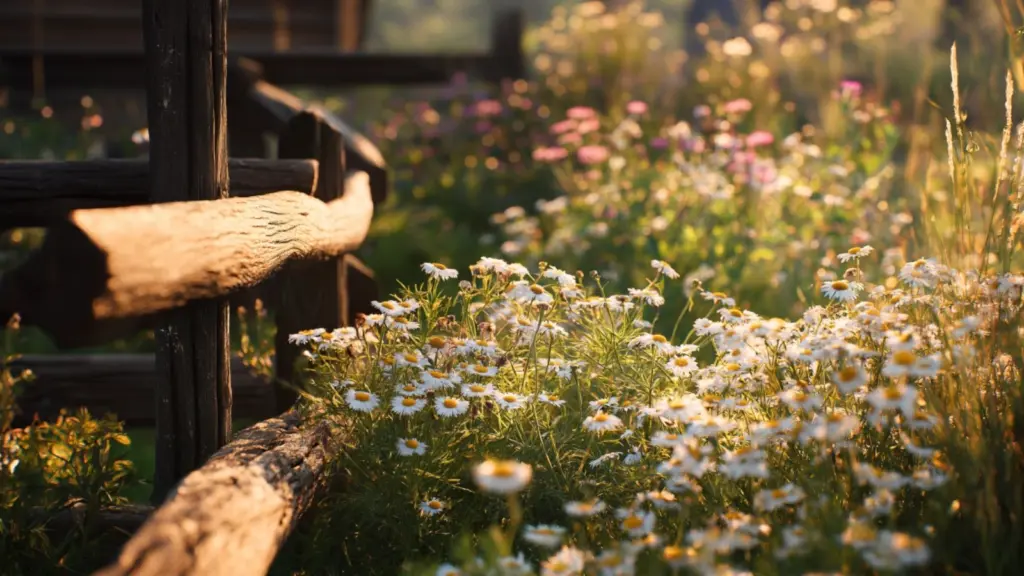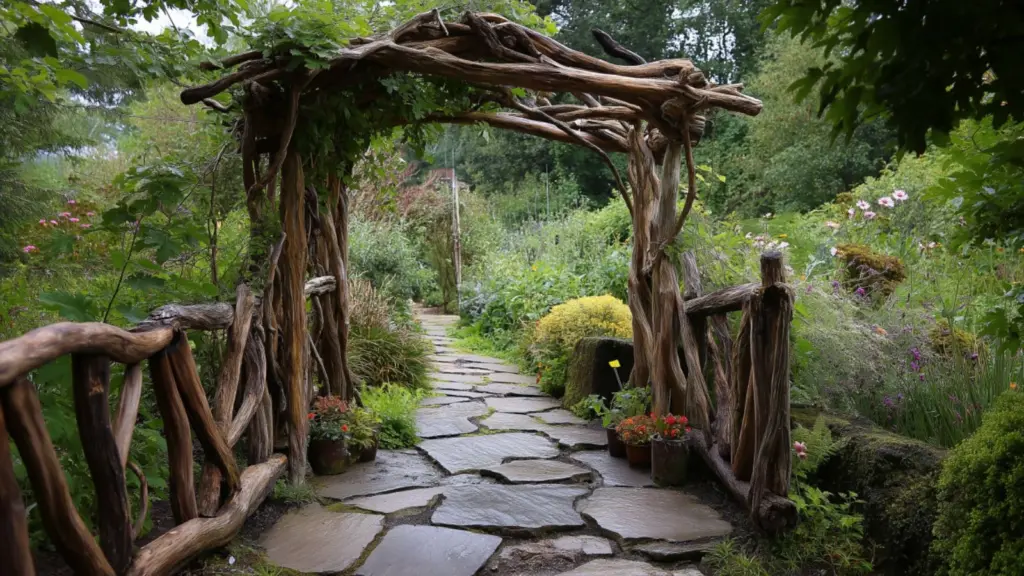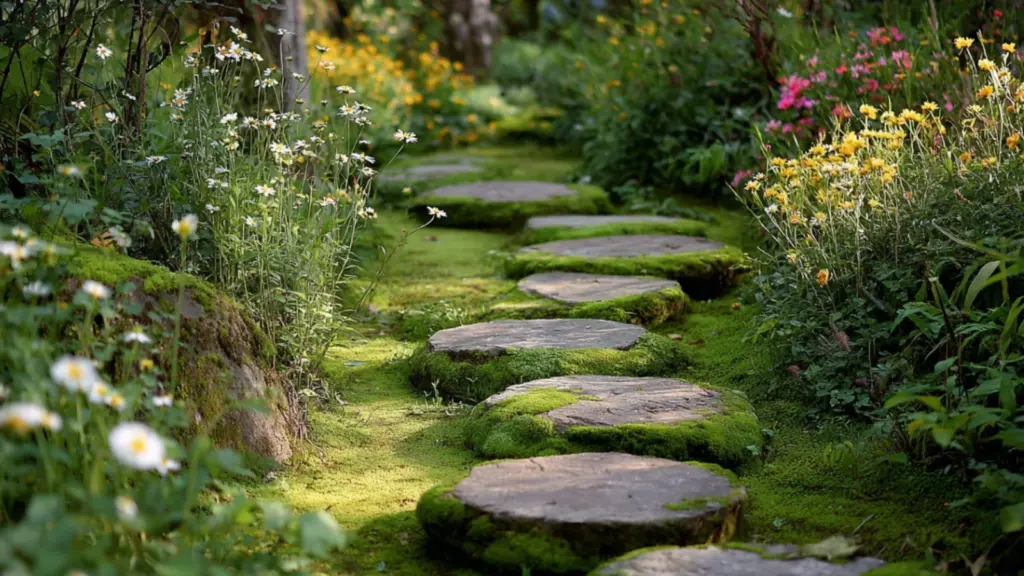DIY Cottagecore Backyard Garden Projects for Slow-Living Charm and Natural Beauty
Table of Contents
In an age of fast everything—instant communication, convenience meals, and tech-heavy lifestyles—the cottagecore aesthetic offers a breath of fresh air. This romantic, rustic movement celebrates slow living, sustainability, and a reconnection with nature. And what better place to embody that spirit than in your own backyard?
Backyard gardens have long been a sanctuary, but the rise of the cottagecore trend has transformed them into enchanted, nostalgic spaces filled with intentional beauty. Whether it’s growing heirloom vegetables, crafting a handmade trellis, or creating a wildflower meadow, cottagecore garden projects invite you to slow down and savor each detail.
This post explores a range of DIY backyard ideas to infuse your space with cottagecore charm—from repurposed garden furniture to mossy stepping stones and handmade birdhouses. You’ll learn how to turn everyday objects into whimsical features and how to create a haven that feels like stepping into a countryside fairytale.
Whether you’re working with a sprawling yard or a cozy corner, these ideas are all about heart over perfection—encouraging creativity, sustainability, and a deep-rooted connection to the natural world.
Creating a Wildflower Patch for Instant Whimsy

One of the simplest and most impactful cottagecore garden projects is cultivating a wildflower patch. Not only does it bring a burst of color to your space, but it also supports pollinators and requires less maintenance than traditional flower beds.
Start by choosing a location with plenty of sunlight and prepare the soil by removing grass and tilling gently. Opt for a wildflower seed mix native to your region, which increases the likelihood of success and supports local wildlife. Scatter the seeds loosely and rake them into the soil without burying them deeply—most wildflowers prefer shallow planting.
Water daily during germination, and be patient. Your wildflower patch might take a few weeks to sprout, but the reward is a low-maintenance, ever-changing bloom display. Add natural borders like driftwood or stone for a rustic touch.
Table: Steps to Start a DIY Wildflower Garden
| Step | Tools Needed | Notes |
|---|---|---|
| Choose a sunny spot | Spade, rake | Minimum 6 hours of sunlight |
| Prepare the soil | Garden fork or tiller | Remove weeds and grass |
| Scatter seeds | Wildflower seed mix | Native species preferred |
| Lightly rake | Garden rake | Do not bury seeds too deeply |
| Water consistently | Hose or watering can | Especially during first 2 weeks |
Building a Rustic Trellis from Reclaimed Wood

Cottagecore design thrives on repurposed materials, and a handmade trellis is both functional and deeply charming. Whether for climbing roses, sweet peas, or beans, a rustic trellis adds structure to your garden while blending effortlessly into the natural setting.
Look for old wooden pallets, branches, or salvaged wood planks. Avoid treated wood, as chemicals can leach into the soil. Create a simple A-frame or grid structure, fastening pieces together with natural twine or screws.
The irregularities of reclaimed materials only add to the appeal. Leave the wood unpainted to age gracefully, or give it a wash of diluted white paint for a weathered look. Position your trellis near a garden bed or container where climbing plants can grow freely.
Table: Materials for a Reclaimed Wood Trellis
| Material | Source Ideas | Best Use |
|---|---|---|
| Old wood planks | Pallets, fencing scraps | Main frame structure |
| Long branches | Fallen tree limbs | Natural cross-pieces or lattice |
| Natural jute twine | Garden center, craft store | Fastening and rustic appeal |
| Galvanized screws | Hardware store | Stability for heavier frames |
Building a Cottagecore Herb Spiral Garden

An herb spiral is a visually striking and ecologically efficient addition to a cottagecore garden. This vertical spiral-shaped bed saves space, conserves water, and allows you to grow a wide variety of herbs in different microclimates—all within arm’s reach. Plus, it looks like something out of a storybook.
To begin, choose a sunny location. Mark a circle approximately three to five feet in diameter. Use stones, reclaimed bricks, or even repurposed concrete to build the spiral walls—stacking them gradually higher toward the center. Fill in the structure with a mix of soil and compost as you build.
Plant moisture-loving herbs like mint or chives near the base where water collects, while placing drought-tolerant herbs like rosemary and thyme at the top. The spiral design naturally manages water flow and sun exposure, making it ideal for a sustainable garden layout.
Table: Spiral Herb Garden Design Guide
| Spiral Level | Ideal Herbs | Water Needs |
|---|---|---|
| Top (most dry) | Rosemary, thyme | Low |
| Mid-level | Oregano, sage | Moderate |
| Bottom (most moist) | Mint, parsley, basil | Higher moisture required |
This project combines sustainability with aesthetic charm and encourages a meditative rhythm of building with your hands. It’s the kind of DIY that brings both beauty and nourishment.
Crafting Stepping Stones for a Storybook Garden Path

Creating your own stepping stones is an artistic way to guide guests through your garden and add a personal touch underfoot. Each step can be a unique creation—stamped with leaves, pressed with flowers, or embedded with broken china for a mosaic effect.
Use quick-setting concrete and pour it into round or square molds (old cake pans or plastic trays work well). Before the mix dries, press in natural objects like fern leaves or shells. You can also carve in dates or quotes for a sentimental touch.
Place the stones along a winding path through your yard, between garden beds or under arched vines. Over time, they’ll weather and blend with moss or creeping thyme, enhancing the fairytale aesthetic.
Table: Custom Stepping Stone DIY Materials
| Material | Purpose | Creative Tip |
|---|---|---|
| Quick-set concrete | Base for stone | Available at hardware stores |
| Old pans or trays | Molds for shape | Use different shapes for variety |
| Leaves, stones, tiles | Decorative embossing | Press gently before concrete sets |
| Acrylic sealer (optional) | Preserves details and color | Especially for painted or detailed |
Creating a DIY Birdhouse from Vintage Teacups or Wood Scraps
Inviting birds into your garden enhances its life and music—and a handmade birdhouse is the perfect welcome. Using either vintage teacups or wooden offcuts, you can craft a bird feeder or nesting box that fits the cottagecore aesthetic.
For a teacup feeder, glue the cup onto a saucer, then attach both to a fence post or tree with a sturdy bracket. Fill with seeds and let birds enjoy their meals from dainty china. For a nesting box, use scrap wood to build a small, ventilated box with a circular entrance and slanted roof for rain runoff.
Paint in soft pastels or leave natural, and consider adding tiny details like a moss roof or floral embellishments. Position in a sheltered area that’s easy to watch from a cozy garden bench or window.
Table: Materials for Cottagecore Birdhouses
| Birdhouse Type | Materials Needed | Best Placement |
|---|---|---|
| Teacup Feeder | Vintage teacup, saucer, adhesive | Fence post, low tree branch |
| Wooden Nest Box | Scrap wood, nails, weatherproof paint | Tree trunk, shed wall, shaded area |
| Moss Roofing | Moss, twine, glue | Adds charm and natural insulation |
Building a Potting Table from Salvaged Furniture
A potting table is both practical and visually charming—a dedicated place to transplant seedlings, mix soil, and store tools. In true cottagecore spirit, it’s easy to make one using salvaged furniture or mismatched wood pieces.
Start with an old side table, vanity, or desk. Sand down rough areas and give it a fresh coat of milk paint or soft matte color like sage, cream, or robin’s egg blue. Add a sturdy top surface—tile, galvanized steel, or reclaimed wood all work well.
Incorporate hooks along the sides for hanging tools and baskets underneath for extra pots or soil. Consider attaching a small chalkboard to label what you’re planting or note seasonal reminders. Add a decorative touch with stenciled floral patterns or pressed flower decals.
Table: Repurposed Potting Table Design Plan
| Component | Material or Furniture Source | Function |
|---|---|---|
| Base structure | Desk, vanity, kitchen cart | Core frame and working surface |
| Top surface | Wood board, tile, metal sheet | Potting and soil mixing area |
| Side accessories | Hooks, rails, dowels | Tool storage |
| Storage space | Crates, bins, baskets | Organize seeds, pots, gloves |
This DIY project gives you a place to slow down and enjoy the rituals of gardening. With a potting table, even repotting a basil plant becomes a moment of peace.
Conclusion
Cottagecore garden projects are more than just DIY decor—they’re expressions of mindfulness, sustainability, and joy. Whether you’re planting a wildflower meadow, crafting stepping stones, or turning forgotten objects into bird sanctuaries, each project encourages you to slow down and reconnect with nature’s quiet rhythm.
In a world that values speed and polish, there’s magic in the imperfect, the handmade, the heartfelt. Your backyard can become more than a space—it can become a lifestyle, a mood, a story told through soil, wood, and blooms.
With intention, creativity, and a little dirt under your nails, the cottagecore dream is never far from reach.

